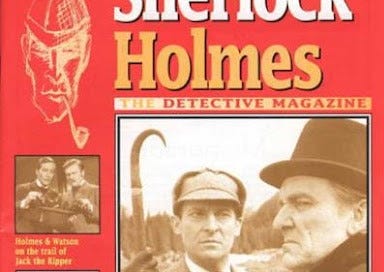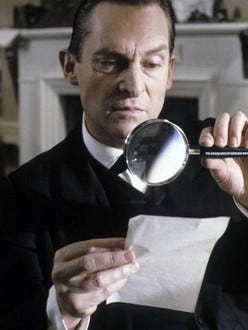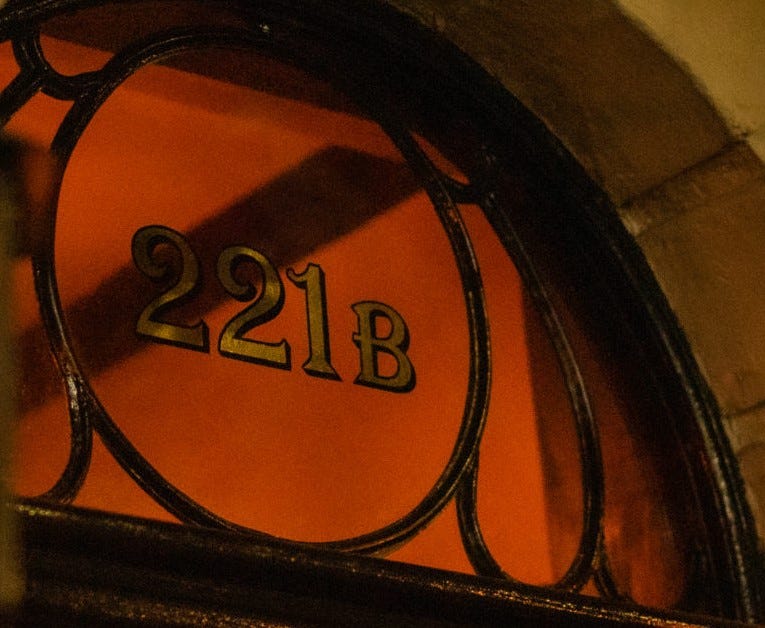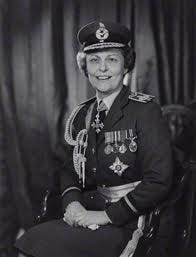Sherlock Holmes and the Case of the Phantom Letter Writers
The great detective is a global icon - but surely everybody knows he is just a work of fiction?
You’re going to find the following paragraphs hard to credit, but I swear it’s all true. Back in the 1990s I got a call from New Scotland Yard, from a Superintendent who was staff officer to the then Commissioner. Could I help them out with a rather tricky problem?
The Chief of Detectives at an Illinois police department was retiring and his boss, the Chief of Police, had written to the Metropolitan Police asking them to locate Sherlock Holmes and persuade him to send a personal letter to the retiring officer wishing him a long and happy retirement.
Why ask me? Well, among a variety of media interests, I was owner and publisher of a decidedly niche magazine dedicated to Sir Arthur Conan Doyle’s block-buster literary creation. And after failing to fob off their American colleagues with the simple facts that Holmes was (a) completely fictional and (b) would anyway have been long dead by this time even if he HAD been a real person, the top men at the Yard were stumped. The Superintendent had gone to the trouble of contacting the American force to tactfully explain the facts of the matter, but the Americans would have none of it - their Chief Detective had followed Holmes’ adventures all his life. He had set his heart on a retirement tribute from Holmes himself.
Now this is not quite as crackers as it sounds. In the USA, due to their more liberal copyright laws, Holmes could easily have still been alive and well. Conan Doyle’s original stories had run their course by the 1920s, but the Great Detective has had several incarnations since then. A US radio series had run for decades, with American-themed stories. New adventures had appeared in print hundreds of times - both magazine stories and whole novels.
Holmes was big in the movies, too. Hollywood had spent decades churning out Sherlock movies, with increasingly bizarre plots far removed from the original mysteries in the gas-lit streets of London. In some the Great Detective had even been been fighting the Nazis. Holmes was not marooned in the fogs of Victorian Britain - he’d even orbited in space. So an Illinois cop wasn’t going to be put off by a dusty rebuff from Scotland Yard.
The Superintendent’s plan was this - I would provide a letter on the magazine’s letterhead confirming that I had spoken to Holmes about the Chief of Detectives and all his manifold achievements. Holmes, I was to say, had tasked me with sending his very best wishes across the Atlantic. So here was the a boss of the Metropolitan Police playing fast and loose with the facts, but in a good cause, so I penned a suitable letter and sent it round to New Scotland Yard. It was forwarded, I was told later, with another on the Commissioner’s official notepaper, adding the Met’s own congratulations. It was a daft ploy but everybody was apparently satisfied. The US detective had his retirement wish and if he chose to believe our little fiction, then what harm was done?
This episode from nigh on 30 years ago sprang to mind this week when I was reading a post from Jodie (@fiftybeautifulthings), one of my favourite Substack contributors. She’s in Verona and visited La Casa di Giulietta, a building which trades on the belief that Shakespeare’s Romeo and Juliet is fact not fable. As Jodie explains in her Substack:-
There is a small red mailbox attached to a wall nearby, marked “Giulietta”. It is the property of the Juliet Club, an organization based in Verona that is tasked with the responsibility of answering Juliet’s mail.
Juliet gets a lot of mail these days. People - mostly women, I imagine - from around the world write to her and share their stories of love: sometimes to share heartbreak or happiness, sometimes to ask for advice. Anyone visiting Verona can drop the letters off in person, in the little red mailbox.
Every letter is answered by the secretaries of the Juliet Club. The tradition has been in place since the 1930s, when a generous man working as a guardian of Juliet’s tomb (also nearby) gathered up the various letters left by lovers at the grave and wrote heartfelt replies.
So writing to Sherlock Holmes is not as bizarre as you might imagine. In fact, it turns out that around the globe sending letters to entirely fictional characters is quite a phenomenon.
In the UK we probably all know that the Royal Mail will answer letters addressed to Santa Claus - providing they are received by November and properly stamped. I vaguely remember writing my own letters to Father Christmas, but despite the fact that my old man spent his whole working life toiling in the Post Office (or maybe because of it!) I don’t recall ever getting a reply stamped Greenland. These days Santa’s gnomes have gone digital so the answer a young correspondent receives will probably be an emailed pdf.
Now it’s hardly surprising children are inclined to believe Santa is real (I hedged my bets on this until I was 10 - largely for fear that the Christmas present pipeline might dry up). Adults however? Yet when I acquired Sherlock Holmes - the Detective Magazine and began to delve into the Sherlockian world I discovered that not only was Holmes prepared to conduct correspondence with his ardent fanbase, he had an office staff to assist him! The London-based building society Abbey National received tens of thousands of letters a year at their HQ offices. The reason was that their building was at 221 Baker Street, London. Since 221B Baker Street - the phoney address created by Arthur Conan Doyle for Sherlock and Dr Watson - didn’t exist, the Royal Mail delivered Holmes’ mail to what they reckoned was the next best address.
The Abbey National at that time employed a full-time secretary just to deal with Sherlock’s mail. Writers would get a polite, printed response, by return. Heaven knows what this operation cost - but I suspect the Building Society bosses were delighted to be rid of their accidental role as Sherlock’s private office when they sold the building and moved elsewhere.
These days, I believe, the mail goes to a building further up Baker Street where an enterprising family founded a “museum” of Sherlock Holmes in 1990. The attraction is rather well done with a mock-up of Sherlock’s sitting room and an enormous selection of gifts and memorabilia. The Museum’s website is artfully written explaining that the building is now listed to protect its architectural and cultural heritage, boasting a blue plaque to commemorate the period of Holmes’ residency. The website adds that: thousands of visitors from all over the world make a pilgrimage to the home of their literary hero.
It is sobering to stand in Baker Street and watch the crowds of visitors arrive at the Museum door, with its bogus Bobby standing smartly outside - quite a contrast to the actual police who these days all seem to wear baseball caps and oversized dungarees, festooned with body-cameras and curious ironmongery. Over the tourist season there are many thousands of Japanese, in particular, who seem like a brief stop in Baker Street before their whirlwind coach tours move off for lunch in Stratford upon Avon and cream tea in the Cotswolds.
The fact that the doors of the buildings either side of 221B are numbered 237 and 241 doesn’t seem to trouble the the Sherlock fans. Well, whatever makes you happy.
The Sherlock magazines was not my most lucrative business venture, but there were a few upsides to being the owner of the magazine, one of which was meeting a variety of individuals who, in their particular ways, were utterly devoted to the fictional detective. Some Sherlockians can be a wee bit dull, their obsession with micro-detail in the original stories rendering them unaware of the simple joy the TV and movie adaptations bring to most of us. Yet some in the world of Holmes were a genuine treat. My ownership came just in time, for instance, to meet Conan Doyle’s last surviving child - Dame Jean Conan Doyle. We met in her elegant flat overlooking a famous London square with its private gardens. It was probably more of a Mary Poppins location than the foggy back-alleys in her father’s stories. Dame Jean was one of several people who had an interest in the complex copyright of Conan Doyle’s works and of the Holmes name and she was interested to know what future I had planned for the magazine, which she was happy to support.
The complexities and intrigues surrounding the Doyle legacy - made even more difficult because of conflicting copyright regimes in the USA and Europe - would make a book in themselves. Many people have made many millions from Holmes over the decades but Dame Jean had her own impressive achievements and honours, which owed nothing whatever to her famous father and to me she was kind and encouraging.
Jean had been a tomboy child, calling herself Billy until the age of 10 when she announced she had decided to be a girl, after all. Joining the Women’s Auxiliary Air Force (WAAF) she was a war-time intelligence officer and stayed in uniform during peace-time when the WAAF became the Women’s Royal Air Force. She ultimately attained the highest rank then available to women, Air Commandant, by the 1960s. She was also an Aide de Camp to the Queen.
Dame Jean may have been an ardent protector of her father’s works and of the Holmes legend, but for her own career she kept both feet firmly in the real world.
Not so the millions of readers, listeners and viewers who have been captivated by Doyle’s irascible creation, just as they have by the power of love in Shakespeare’s Verona fable. After all, it does no harm to weave a little fantasy into the reality of daily life.
So, looking back to that call from Scotland Yard, I see in my mind’s eye the wall of an old cop’s retirement den. Along with his badges, medals and commemorative truncheon, hopefully my framed letter still hangs in pride of place.
Sadly Sherlock Holmes - the Detective Magazine is no longer published. I sold the company which owned it some years ago and it subsequently ceased publication. If you are curious to see old copies they are often found on Ebay and the like - though prepare for a shock. What I sold for £3 now fetches between £8 and …honestly ….£195 on the web for what collectors consider a rare issue with a Jeremy Brett interview. I went wrong somewhere!








Peter, I quite enjoyed reading this. I think it is a great tribute to the power of the written word both to create heros in our hearts and show kindness where needed.
Great post, Peter. I love the idea of that framed letter somewhere in the US.